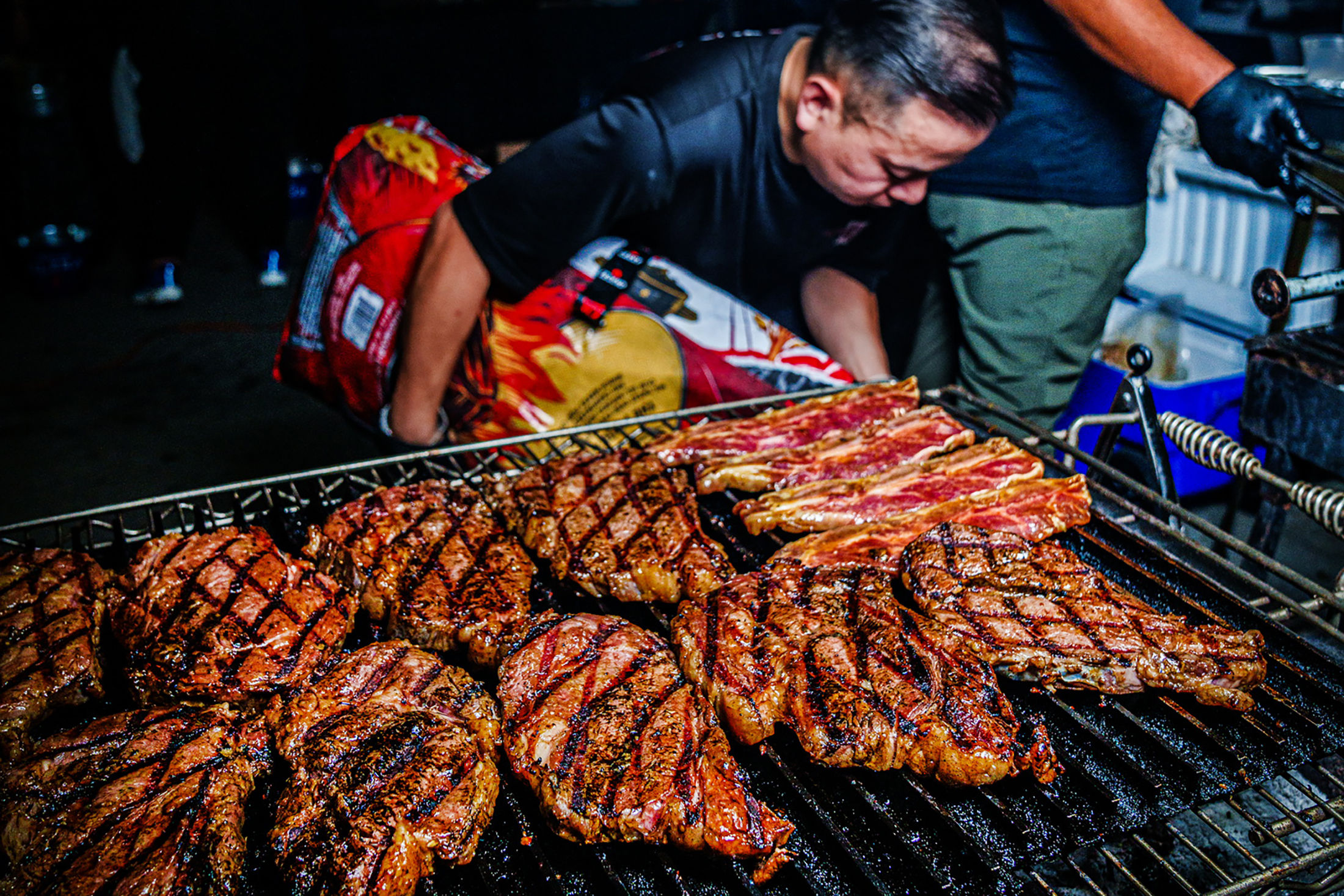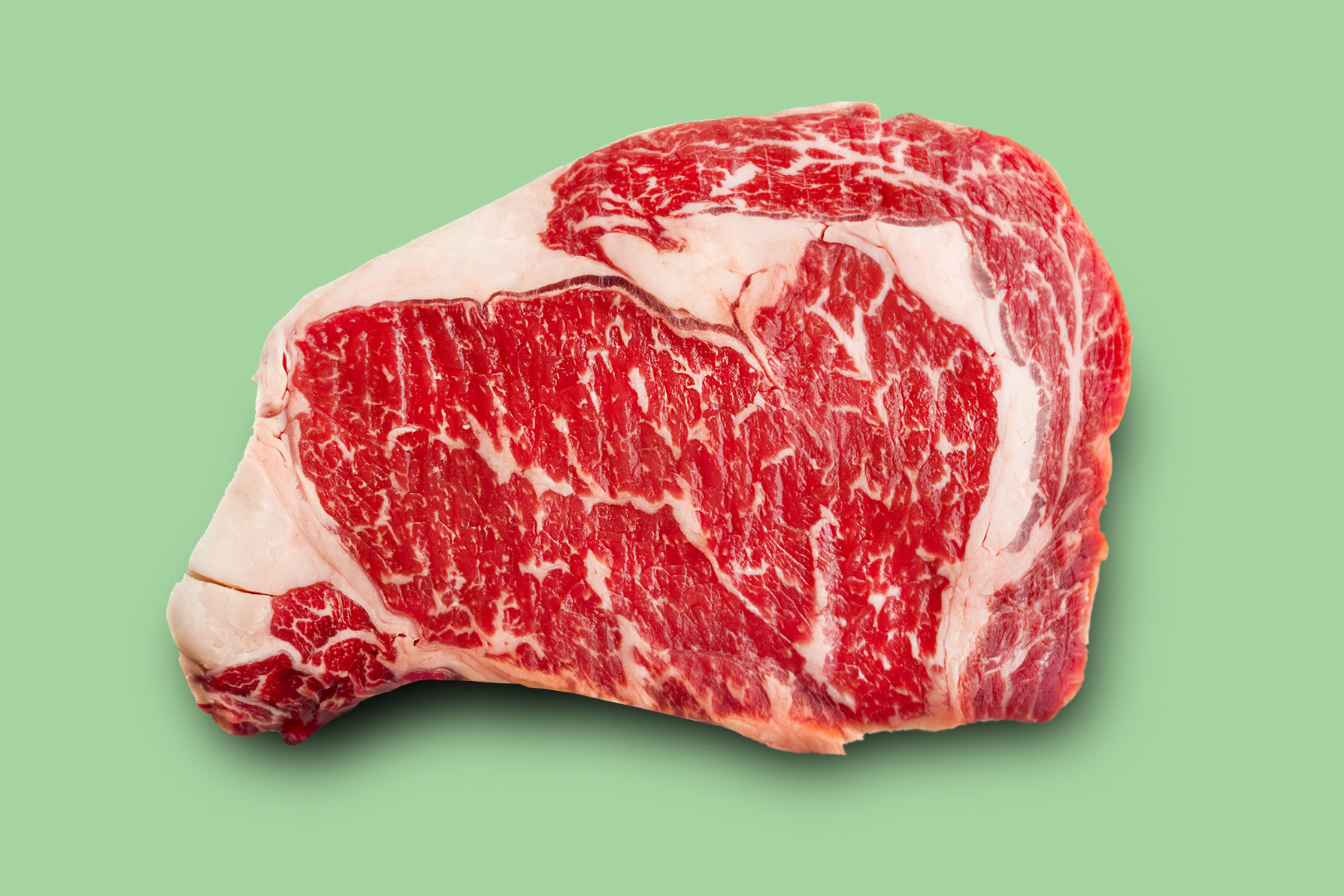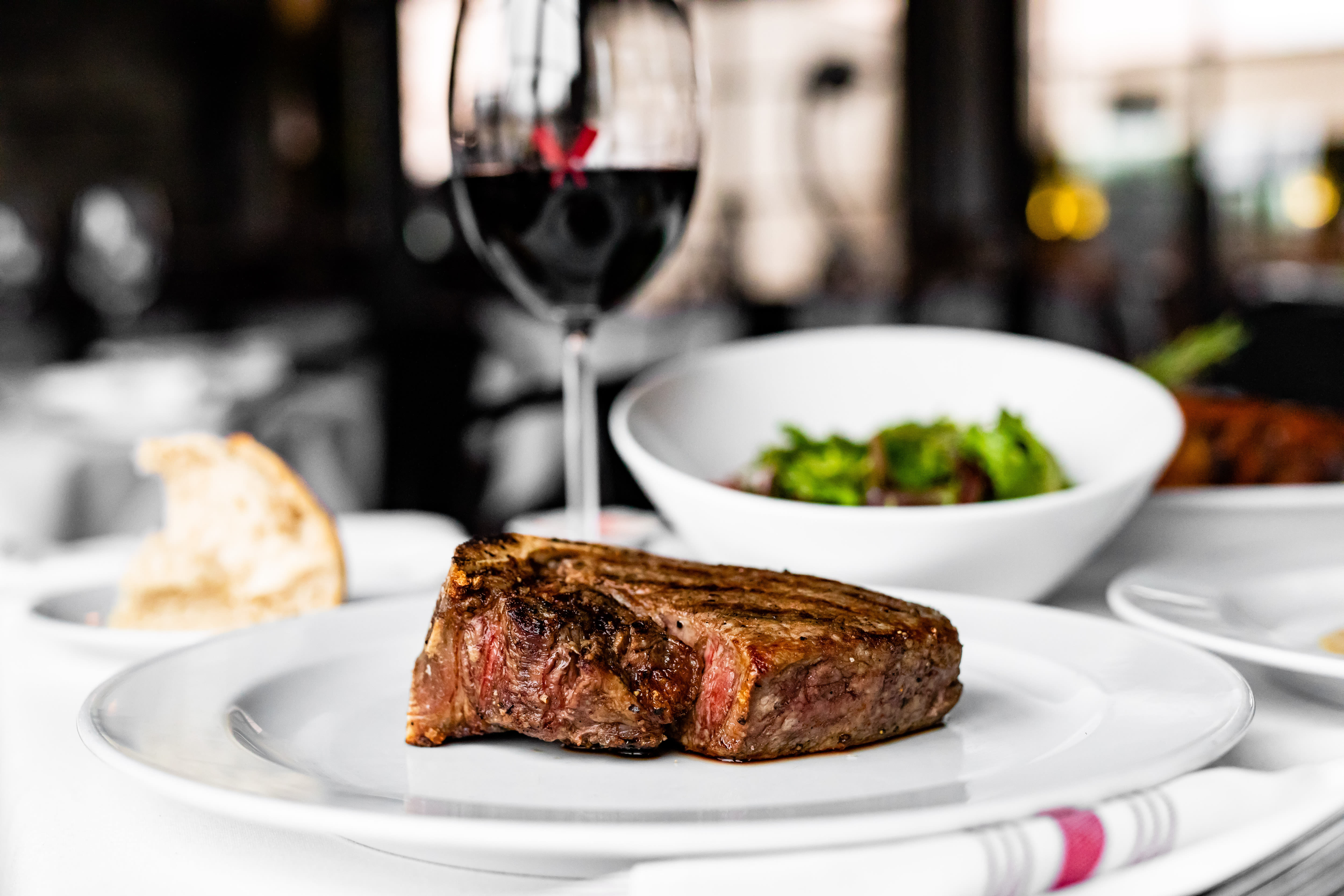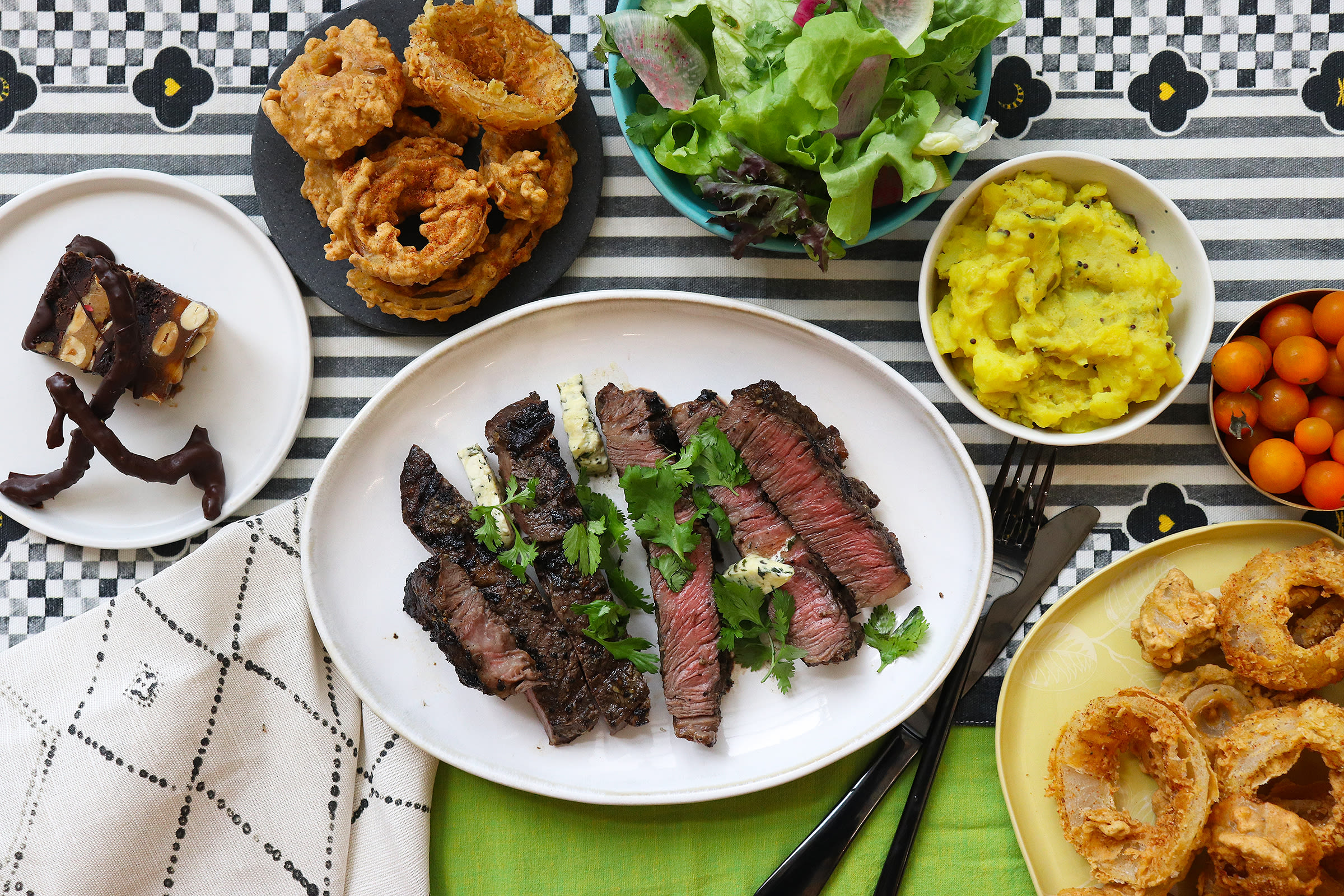B&B Butchers Is the Only Place in Houston to Get True Kobe Beef
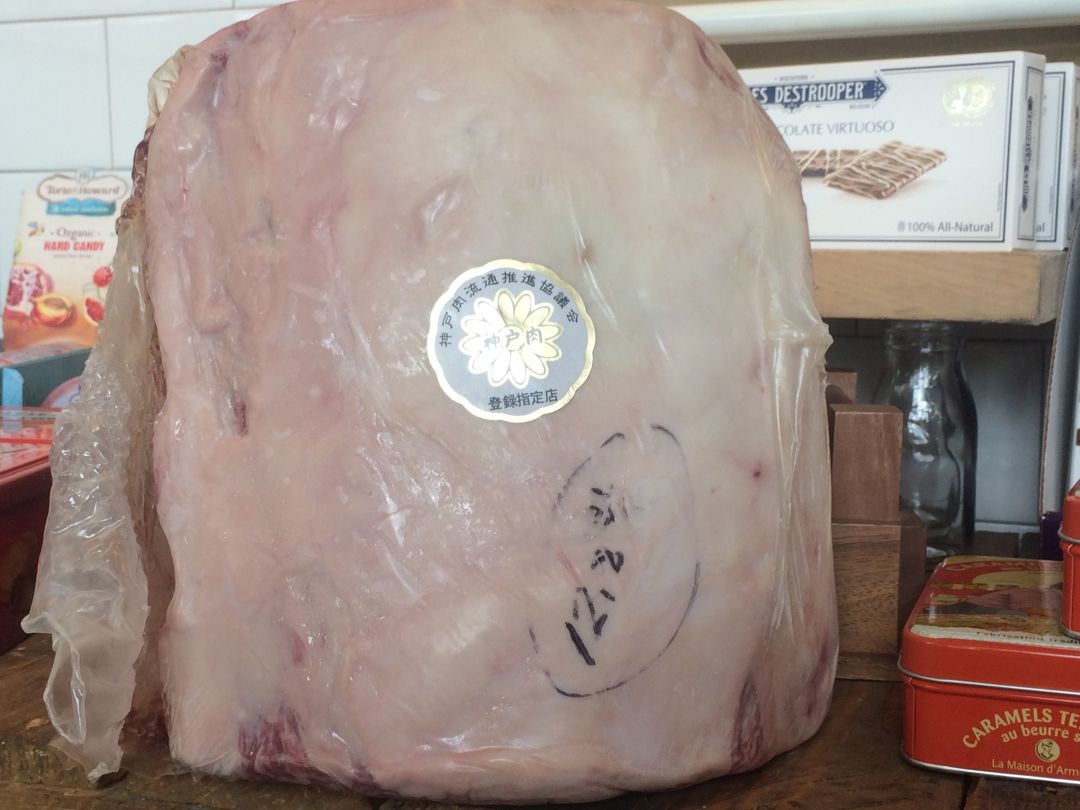
Signed, sealed, delivered, direct from Japan.
Image: Alice Levitt
I hate to be the bearer of bad news, but chances are, you've never eaten Kobe beef, no matter how many times you've ordered it. Placing the word "Kobe" on a menu is one of the most common lies told to diners by restaurants. The truth is, the USDA didn't allow for the importation of beef from Japan to the U.S. until 2012.
Now, very small amounts trickle into the nine American restaurants certified by Japan's Kobe Beef Marketing & Distribution Promotion Association. Yes, just nine. And until a few weeks ago, there were eight. B&B Butchers & Restaurant became the latest to serve up the coveted flesh this week after a six-month wait for certification.
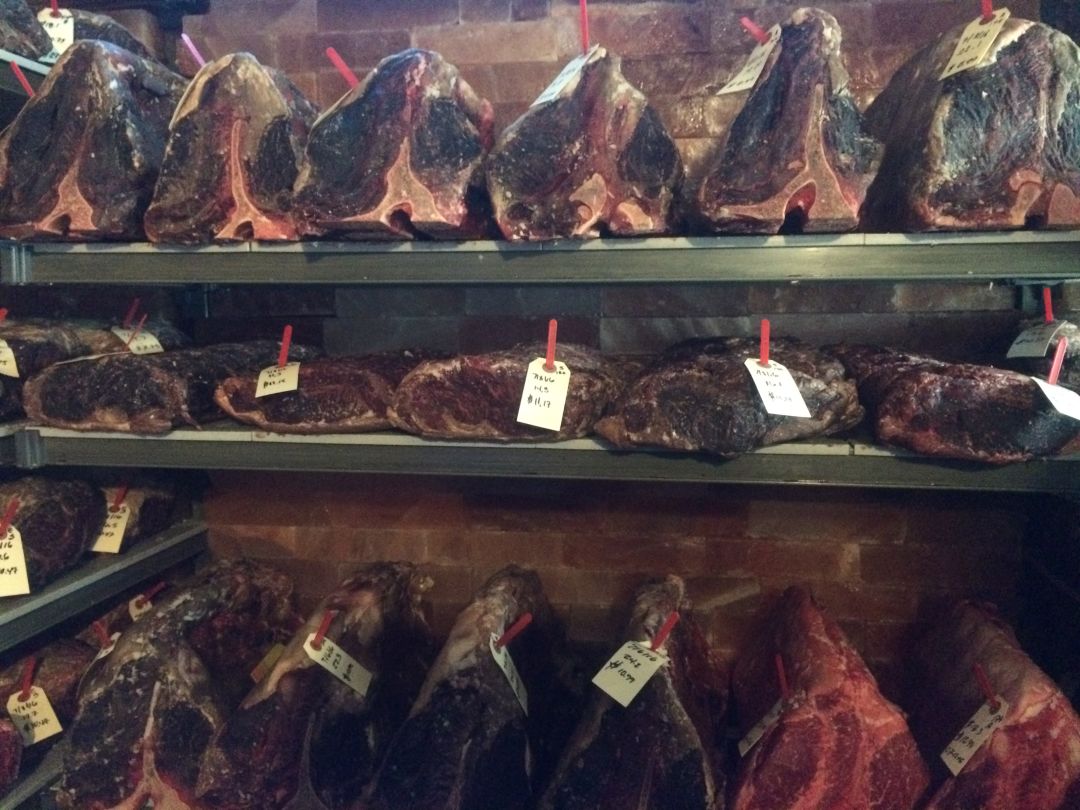
Check out the Himalayan salt bricks in the back.
Image: Alice Levitt
Though real-deal Kobe is new to the restaurant, Texas wagyu is not. Many restaurants that claim to serve breeds of wagyu (there are four, the most common of which, at least in Texas, is Akaushi) have unknowingly purchased cuts from animals that were bred from less-than-pure stock.
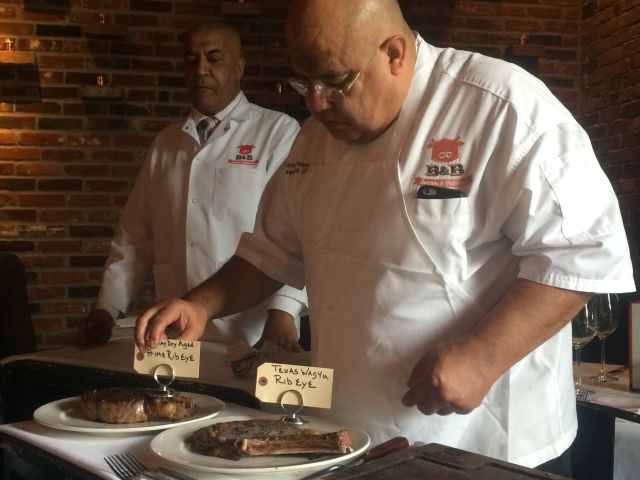
Chef Tommy Elbashary presents a pair of steaks.
Image: Alice Levitt
B&B owner Benjamin Berg stands behind his wagyu from Gearhart Ranch and ages it in a novel way. After wet-aging for 30 days, steaks are dry-aged for either 28 or 55 days against a wall of 3,000 pounds of Himalayan pink salt bricks. Along with a blue ultraviolet light, the salt helps to eliminate bacteria, but also subtly seasons the meat. Consequently, the 55-day rib eye has hints of the funky, saline ferment of prosciutto.
B&B also serves a Japanese wagyu tenderloin from the Kagoshima Prefecture. It's highly marbled, but lacks the intensely buttery flavor of the Tajima Kobe imported from the Hyogo prefecture.
Just how richly does that intramuscular fat lace through the Kobe? Have a look.
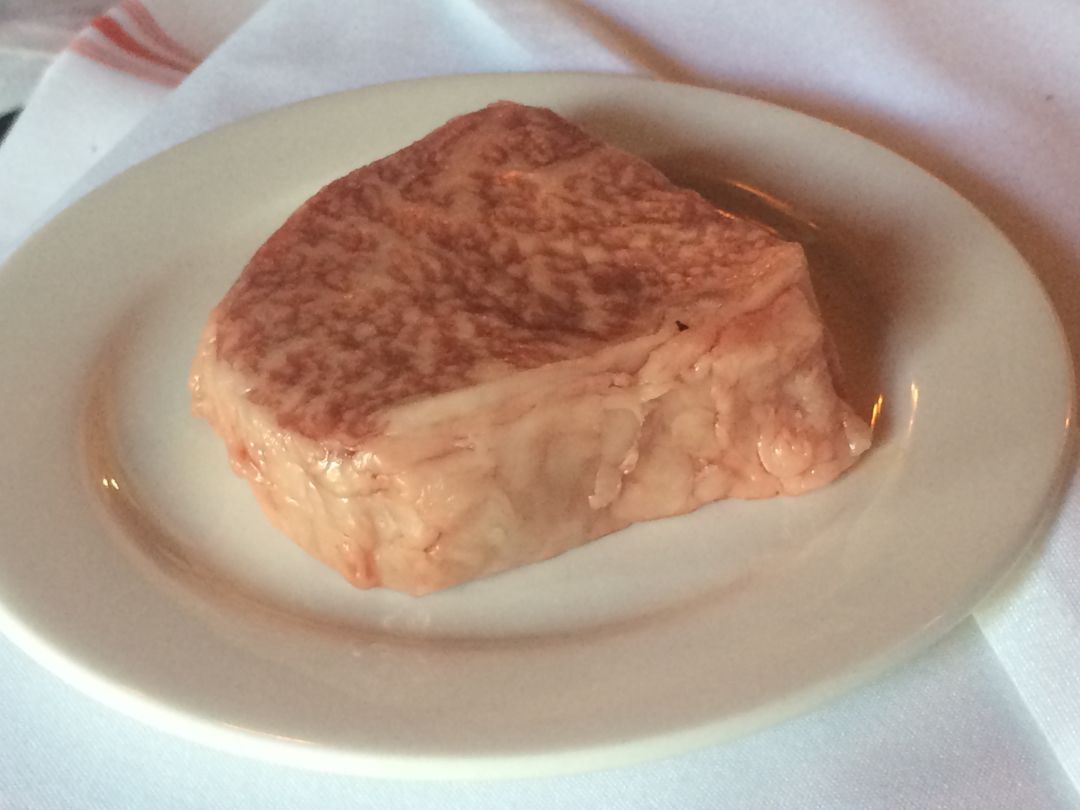
Four-ounce Kobe ribeye, $220.
Image: Alice Levitt
No knife is required to cut through that bad boy, which is seared in a pan—the restaurant's broiler is too intense for the delicate flesh. Berg says that the steaks will be available when his Japanese supplier is able to send them, so the delicacy will be scarce, but should regularly be on offer. Four ounces retails for $220, whether the cut is a filet mignon, New York strip, rib eye or spinalis dorsi, better known as rib cap or butcher's butter.
Four ounces may seem small, but the richness of the meat means it shouldn't be compared to the weight of a slab of prime Angus. And four ounces is likely enough to create an addiction, especially when served with vegetables cooked in that luscious, lustrous tallow.
